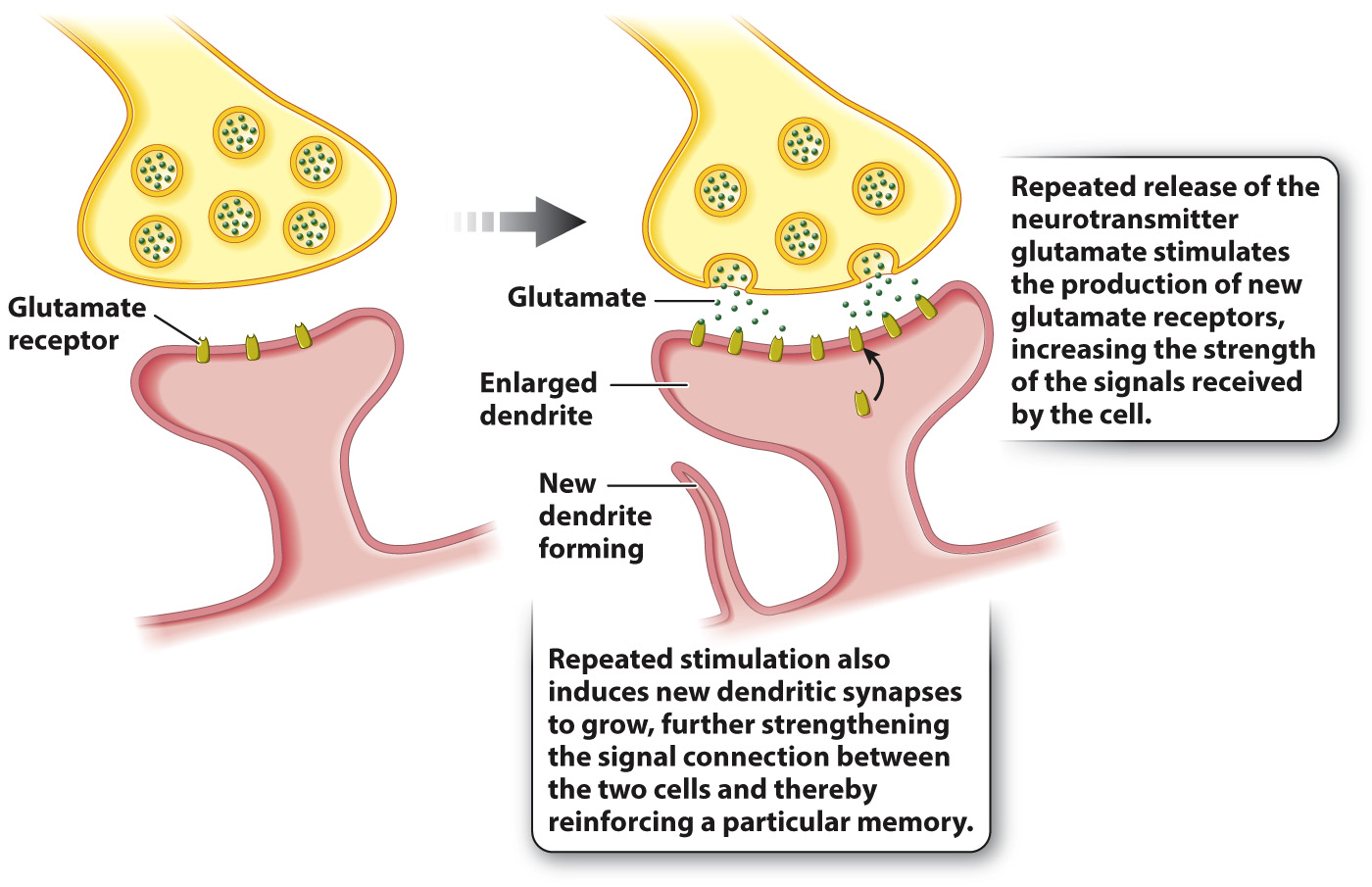The brain serves an important role in memory and learning.
Memory is the basis for learning. An animal that can remember its encounter with a predator or noxious plant will avoid that danger in the future. A memory is formed by changes to neural circuits within specific regions of the brain, specifically, by changes in the synaptic connections between neurons in a neural circuit. These changes enable an animal, for example, to recognize other individuals in its social group or to recognize the threat of a predator. In humans and other primates, the hippocampus, a brain structure in the limbic region, plays a special role in memory formation. We can remember much of the information we receive for several minutes. However, unless reinforced by repetition or by paying particular attention, the information is typically forgotten. The hippocampus transforms reinforced short-
The hippocampus forms long-
The ability to adjust synaptic connections between neurons is called synaptic plasticity (Fig. 36.25). Long-

Through repeated activation of neurons within the hippocampus and associated regions of the cerebral cortex, neural circuits are established that may be reinforced by LTP to create a memory that can be retrieved over long periods of time. Although memories may be associated with certain regions of the cortex, they also rely on the interaction of nerve cells and networks within multiple brain regions.
Although the brain regions involved in memory and learning vary among different animals, the basic features of how memories are constructed by means of synaptic plasticity within neural circuits are likely broadly shared across animals capable of forming memories. For example, the ability of an octopus to learn and remember how to perform motor tasks rivals that of certain vertebrates. Even the roundworm C. elegans has been found to be capable of memory and learning: Individual roundworms learn to avoid pathogenic bacteria in favor of bacteria that are nutritious.
Quick Check 5 Which three areas of the human brain are important for remembering and recognizing a face?
Quick Check 5 Answer
The three areas of the brain that are used to remember and recognize a face are the occipital cortex for processing visual information, the hippocampus for forming long-